HGTV shows are masters of transforming small and cramped spaces into seemingly spacious and airy rooms. While good design plays a crucial role, producers also employ a variety of clever filming techniques to enhance the illusion of size. These tricks, often subtle and unnoticed by the casual viewer, contribute significantly to the dramatic reveals and the feeling of expanded square footage. Understanding these techniques can offer a behind-the-scenes look at the magic of home renovation television.
1. Wide-Angle Lenses
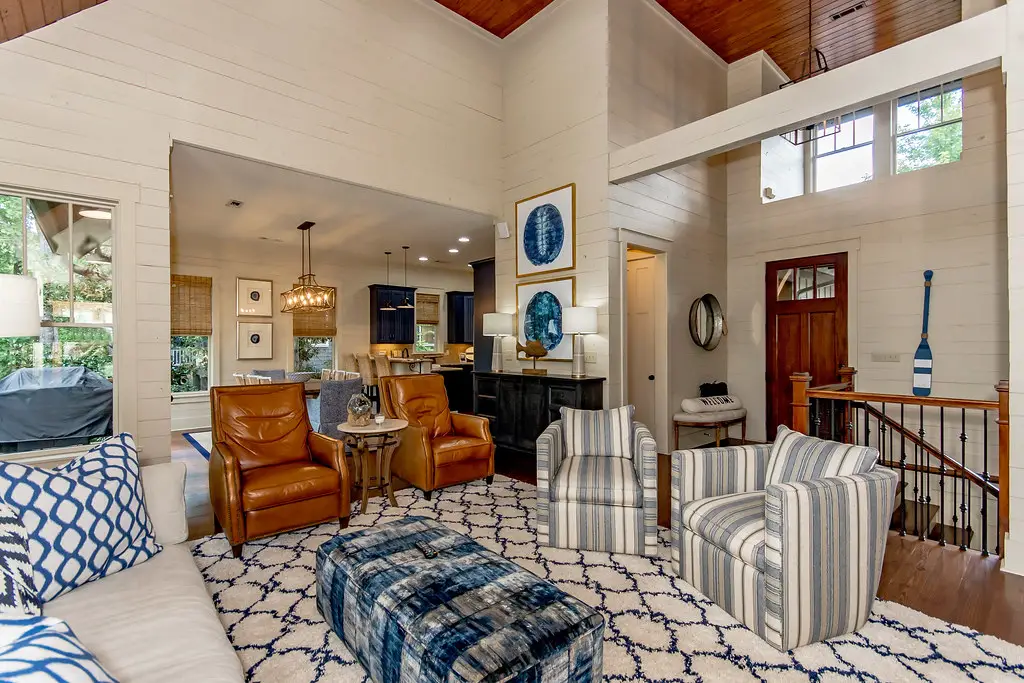
One of the most common tricks is the strategic use of wide-angle lenses during filming. These lenses capture a broader field of view, allowing more of the room to be seen in a single shot. This expanded perspective can visually stretch the dimensions of the space, making it appear larger than it actually is — and HGTV themselves recommend it for real estate photography. The distortion created by wide-angle lenses, particularly at the edges of the frame, can contribute to this effect.
While wide-angle lenses are great for showcasing an entire room, they can sometimes distort the proportions of furniture and make objects appear further apart than they are in reality. Producers carefully frame shots to maximize the sense of spaciousness while minimizing noticeable distortion. This technique is particularly effective in small rooms where every extra inch of perceived space counts.
2. Strategic Furniture Placement (Away from Walls)
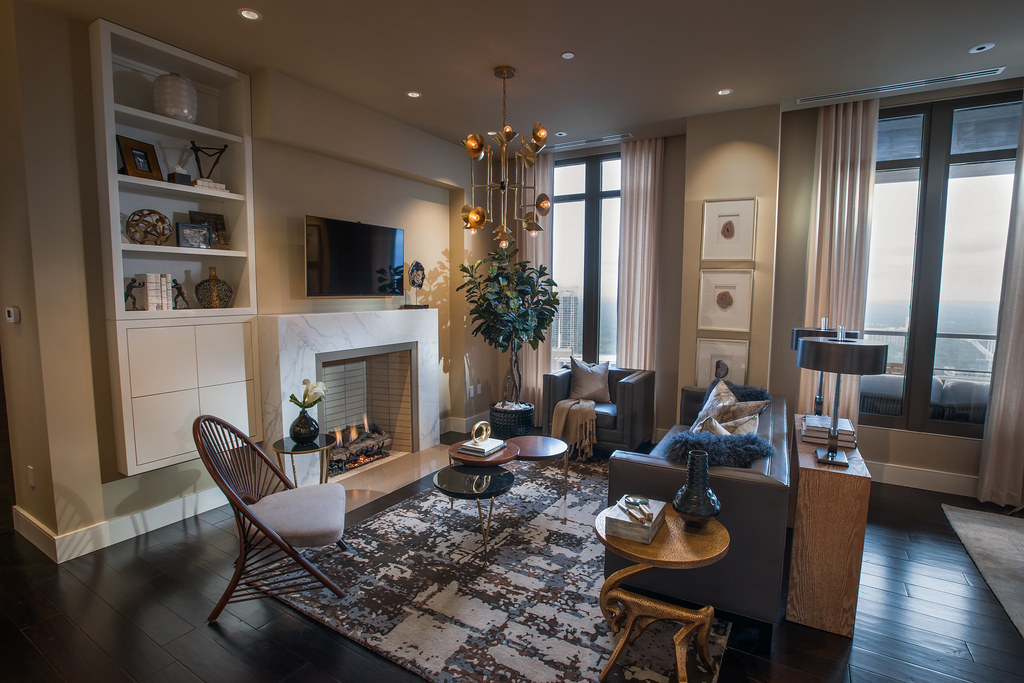
Producers often guide designers to arrange furniture in a way that maximizes the visible floor space. Instead of pushing all the furniture against the walls, pieces are often floated in the center of the room or pulled slightly away from the walls, says House Digest. This creates the illusion of more open space and allows the eye to travel around the room more freely, contributing to a feeling of spaciousness.
This technique can make even small rooms feel more airy and less cluttered. By creating pathways and visual breathing room around furniture, the overall sense of size is enhanced. Producers ensure that the camera angles highlight these intentional furniture arrangements to emphasize the newfound openness of the renovated space.
3. Abundance of Natural Light (and Bright Artificial Light)

Light plays a crucial role in how we perceive the size of a room. HGTV productions often emphasize the use of natural light by opening curtains and blinds fully and strategically positioning cameras to capture bright, airy shots. Additionally, they ensure ample artificial lighting, often using multiple light sources to illuminate every corner of the room and eliminate shadows that can make a space feel smaller and more enclosed, says House Digest.
The bright and well-lit environments showcased on HGTV contribute significantly to the feeling of spaciousness and openness. By eliminating dark corners and maximizing light reflection, the rooms appear larger and more inviting. Producers pay close attention to lighting during filming to enhance this effect.
4. Mirrors, Mirrors Everywhere
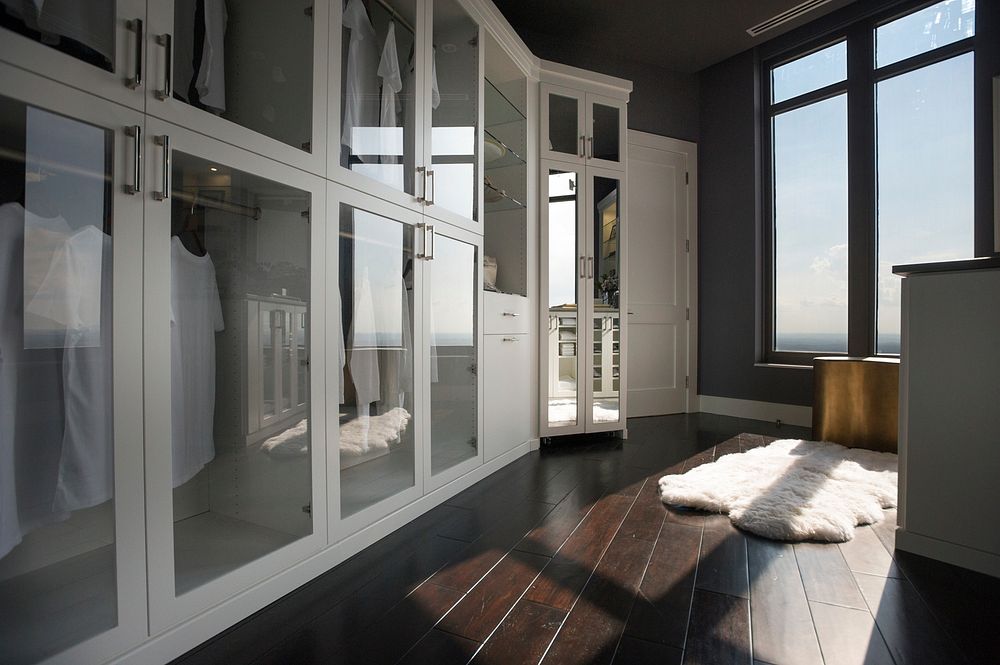
Mirrors are a classic trick for visually expanding a space, and HGTV shows utilize them extensively. Large mirrors strategically placed on walls can reflect light and create the illusion of depth, making a room feel twice its actual size. Producers often highlight the placement of mirrors during reveals to showcase their space-enhancing capabilities.
Mirrors can be particularly effective when placed opposite windows, as they reflect the outdoor view and bring the feeling of the outside in, further contributing to the sense of openness. Producers often choose large, statement mirrors or cleverly integrated mirrored surfaces to maximize this effect on camera.
5. Vertical Lines and Tall Elements

To create the illusion of height, HGTV productions often incorporate design elements with strong vertical lines, such as tall bookshelves, floor-to-ceiling curtains, and vertical paneling. These elements draw the eye upward, making the ceiling appear higher and the room feel more expansive vertically. Producers frame shots to emphasize these vertical elements and their impact on the perceived height of the space.
Even in rooms with standard ceiling heights, the strategic use of vertical design elements can create a subtle but effective illusion of greater height. This vertical emphasis can make a room feel less boxy and more open and airy on camera.
6. Consistent Flooring Throughout Open Spaces
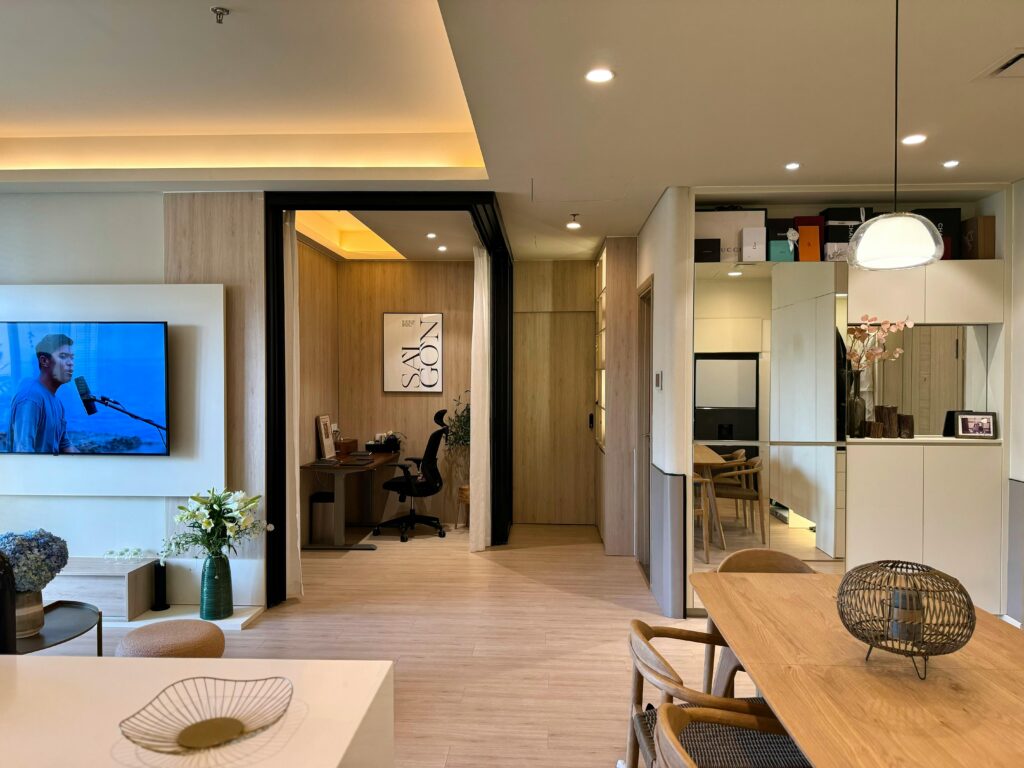
In open-concept layouts, HGTV often showcases the use of consistent flooring throughout the connected areas. This visual continuity eliminates breaks in the floor plane, allowing the eye to travel seamlessly from one space to another, creating a feeling of greater overall square footage. Producers use camera angles that highlight this continuous flooring to emphasize the flow and spaciousness.
By avoiding rugs or changes in flooring that visually divide the space, the interconnected rooms feel larger and more unified on camera. This trick is particularly effective in making smaller open-concept layouts feel more expansive and cohesive.
7. Minimal Clutter and Strategic Editing
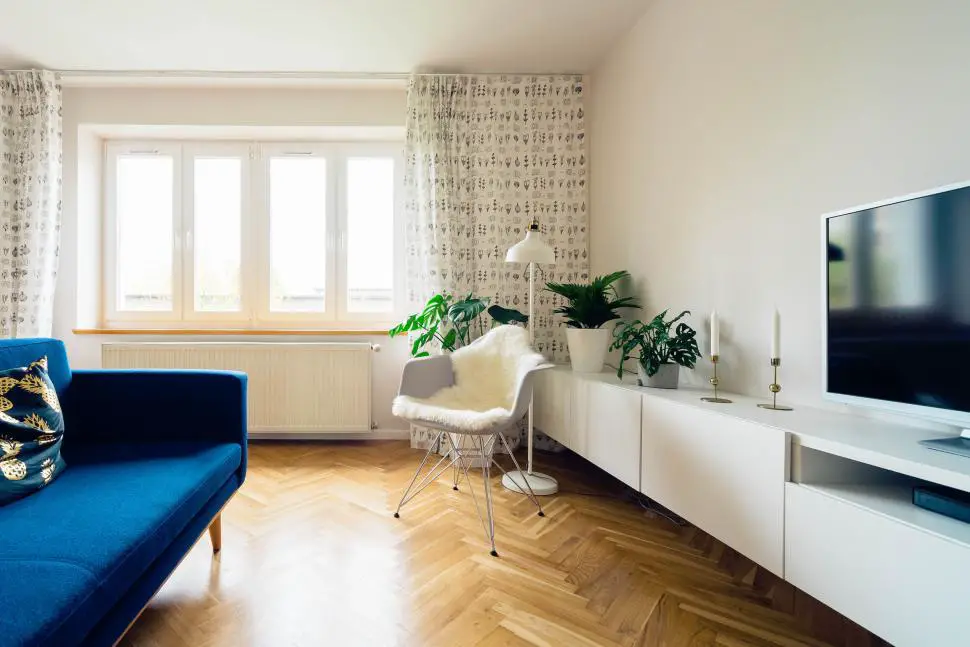
HGTV productions meticulously declutter spaces before filming, removing any unnecessary items that could make a room feel cramped. Additionally, during the editing process, shots are carefully selected to showcase the most open and visually appealing angles, often cutting away quickly from tighter or more cluttered areas. This strategic editing reinforces the illusion of spaciousness.
The clean and organized spaces presented on HGTV are a key component of the “after” reveal. By focusing on the most open and well-designed areas and minimizing the appearance of clutter, producers enhance the feeling of transformation and increased size.
8. Light and Neutral Color Palettes

Light and neutral color palettes are frequently used in HGTV renovations because they reflect light and make a room feel brighter and more spacious. White, cream, and soft pastels are common choices for walls, furniture, and accessories. Producers often highlight how these light colors contribute to the airy and open feel of the renovated spaces.
Darker colors can absorb light and make a room feel smaller and more enclosed. By opting for lighter hues, designers and producers create a visually expansive environment that translates well on camera. The consistent use of light colors throughout a space further enhances this effect.
9. Furniture with Exposed Legs
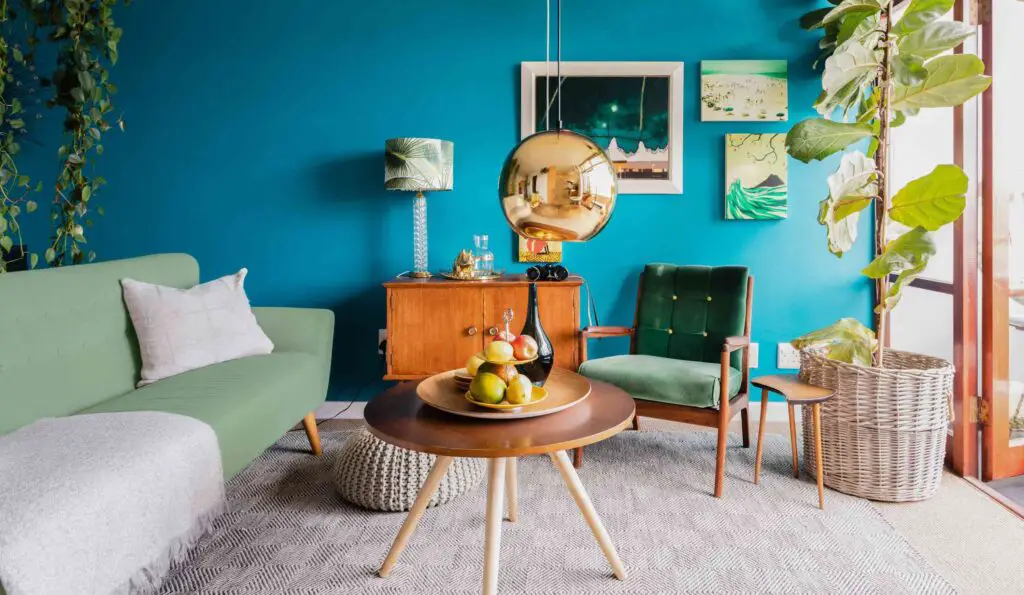
Choosing furniture with exposed legs, such as sofas, chairs, and tables, is another trick used to create a sense of airiness and visual space. Seeing the floor beneath the furniture allows the eye to travel through the room more easily, making it feel less bulky and more open. Producers often frame shots to showcase this visual trick.
This design choice prevents furniture from feeling too grounded and heavy, contributing to a lighter and more spacious overall feel. The negative space created by the exposed legs helps to visually lift the furniture and expand the perceived floor area.
10. Using the Same Color on Walls and Trim

Painting the walls and trim in the same light color can blur the visual boundaries of a room, making the walls appear to recede and the space feel larger. This monochromatic approach eliminates sharp contrasts that can define the edges of the room and make it feel more enclosed. Producers often showcase this seamless color flow to enhance the feeling of spaciousness.
This technique creates a cohesive and continuous visual plane, tricking the eye into perceiving a larger volume of space. The lack of distinct lines between walls and trim contributes to a smoother and more expansive feel on camera.
11. Incorporating See-Through Furniture
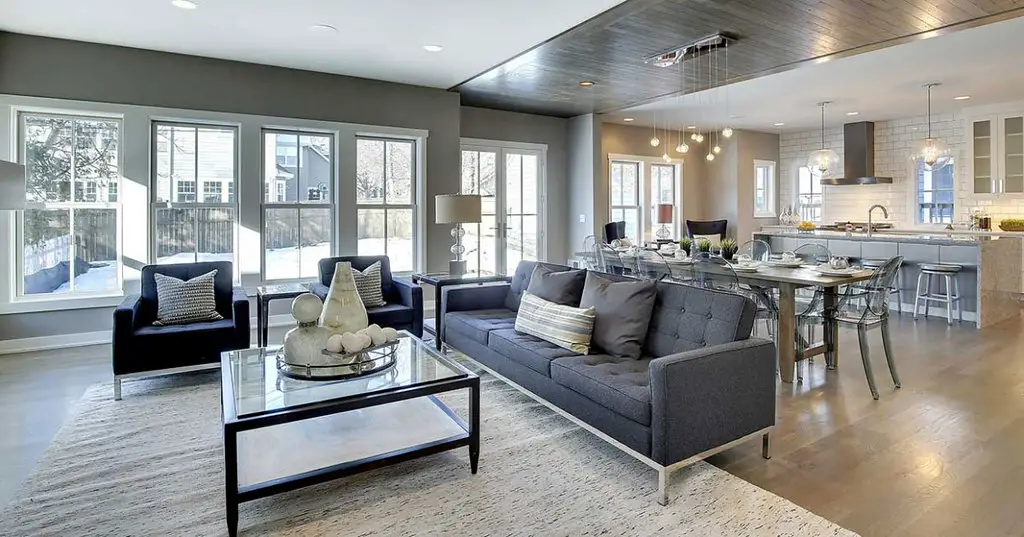
Using furniture made of transparent or translucent materials, such as acrylic or glass coffee tables and chairs, is a clever way to add functionality without visually cluttering a space. These see-through pieces allow the eye to pass through them, maintaining a sense of openness and making the room feel larger. Producers often highlight these transparent elements in their shots.
These pieces essentially occupy space without visually blocking it, contributing to a lighter and more airy feel. They provide the necessary functionality without adding visual weight to the room, enhancing the illusion of spaciousness on camera.
12. Shooting from Low Angles
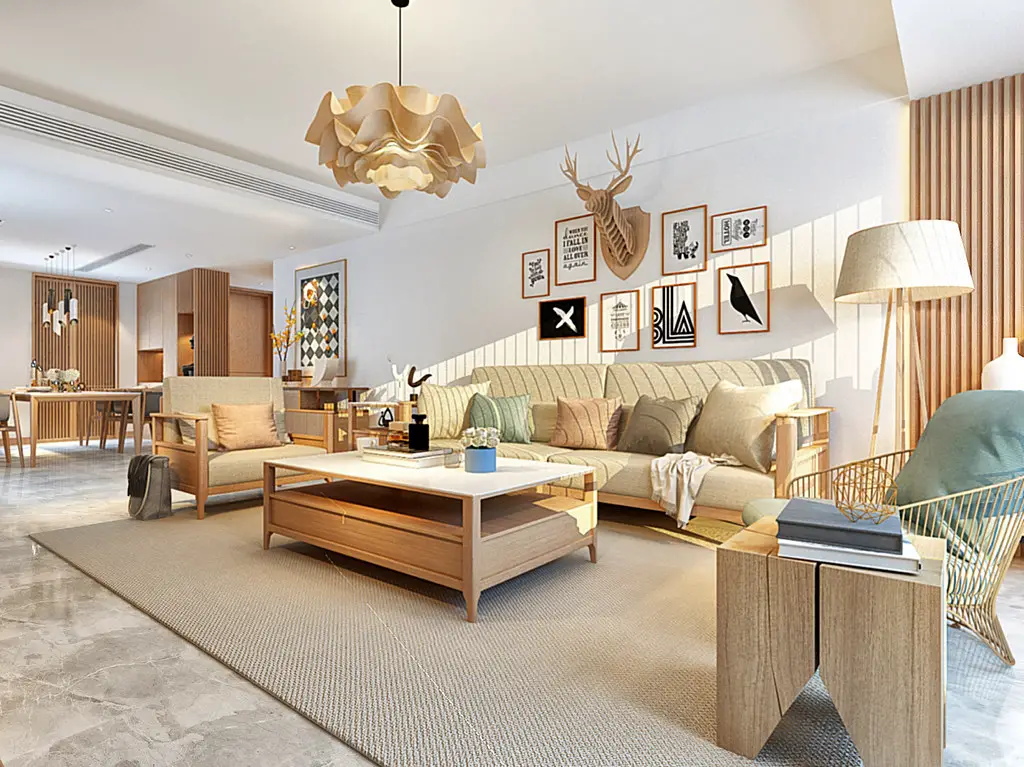
Filming from slightly lower angles can make ceilings appear higher than they actually are. By positioning the camera closer to the floor and tilting upward, producers can emphasize the vertical dimension of the room, making it feel more expansive. This technique is often used during the final reveals to create a more dramatic sense of transformation and increased space.
This subtle camera trick plays on perspective, making the room feel taller and less confined. The upward angle draws the viewer’s eye towards the ceiling, enhancing the perceived volume of the space.
13. Strategic Use of Mirrors in Unexpected Places
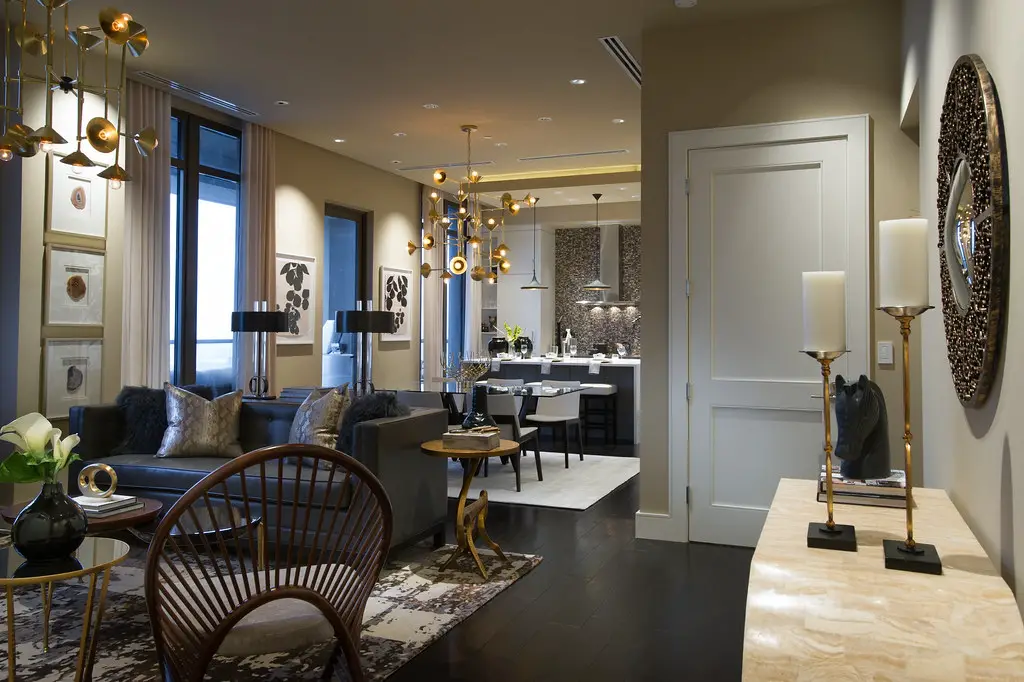
Beyond large wall mirrors, HGTV productions often incorporate mirrored surfaces in unexpected places, such as on furniture, backsplashes, or even as subtle inlays. These smaller reflective surfaces can bounce light around the room and create surprising moments of visual expansion, contributing to the overall feeling of spaciousness. Producers often capture these clever mirror placements to subtly enhance the perceived size of the space.
These unexpected reflections add depth and visual interest, making the room feel more dynamic and open. Even small mirrored accents can contribute to the overall illusion of a larger space when captured effectively on camera.
